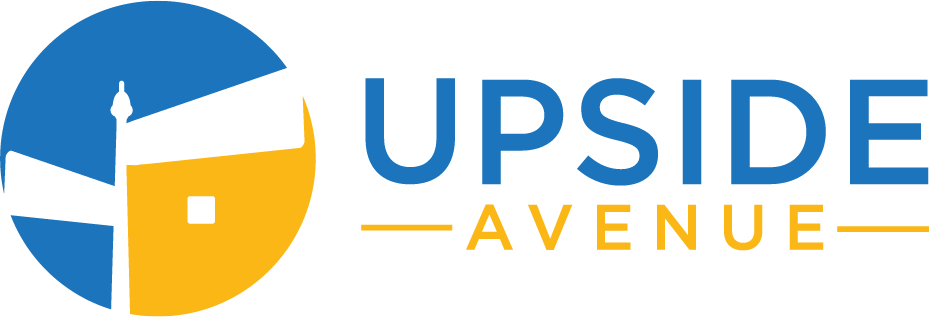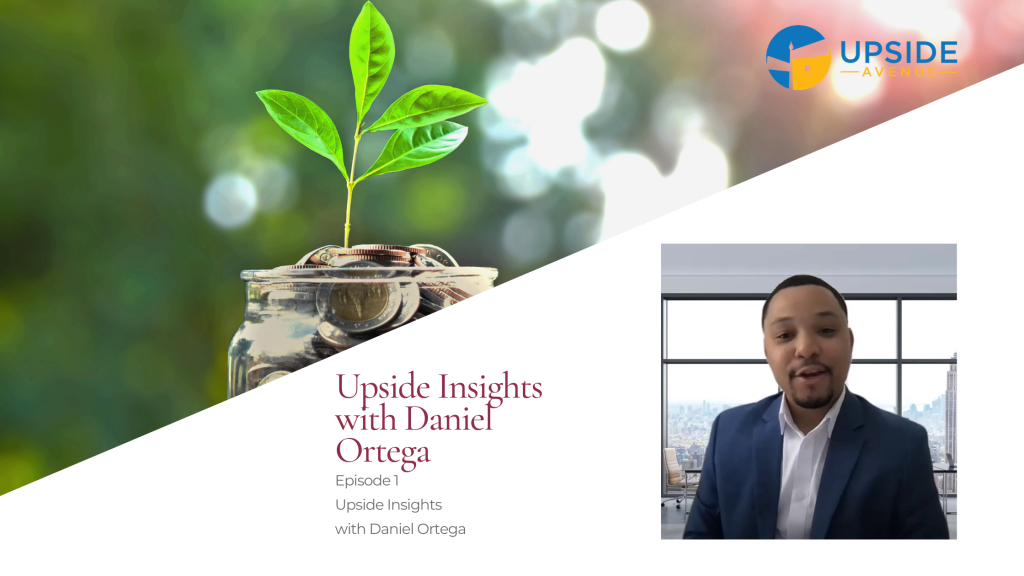Daniel Ortega from Vantage IRA joins Upside Avenue in our latest Upside Insights to explain what are Self Directed IRAs, Traditional IRAs, and Roth IRAs.
Enjoy this episode with Daniel Ortega
Check out the podcast episode on Anchor.fm
Or listen on Spotify
Watch the YouTube Video:
Transcript
Daniel: Good morning, my name is Daniel Ortega. I’m the head of retail sales here with Vantage Retirement Plans. Our friends over and Upside Avenue have asked me to speak with you all today about what is the Self-Directed IRA and what is the difference between a traditional and a Roth IRA? Before we get started: Vantage does not provide any investment advice or endorse any products. All of the information and materials are for educational purposes only. We encourage all parties to consult with their attorney, accountant, or financial advisor before entering into any type of investment.
Before we talk about what is Self-Directed IRA Ray is we should first have an understanding of what it IRA is. And an IRA is an individual retirement account. Internal Revenue Code Section 408 talks about individual retirement accounts and breaks it down as such: an individual retirement account means a trust created or organized in the United States for the exclusive benefit of an individual or his beneficiaries. You might be wondering: well, how does that help me understand what a Self-Directed IRA as well as Self– Directed IRA is a marketing term. It only explains who and how the IRA will be managed by: you, yourself. Now that you have a better understanding of what the. IRS teams and IRA to be, and we discussed that a Self-Directed IRA is not a type of IRA. Let’s dig a little deeper into that. An IRA with Vantage is no different than an IRA, you would have with Fidelity.
The only difference is going to be the assets that you custody inside of that. We’re both required by the IRS to provide the same annual reporting, take the same contributions and so on. So, when we talk about the cuts–the assets that you custody, let’s talk about that and even further detail with a company like Fidelity. Stocks, bonds, mutual funds, ETF’s. Those are the assets that are going to be more your traditional stock market based assets, and that’s what they custody. When you deal in the alternative side, Vantage, we don’t custody stock market based assets. We deal strictly in the alternative space and those assets that we would custody are going to be: Real estate, private lending, and private company. You’ll see that in real estate we have listed the direct purchase, partnership, and leverage. Direct purchase means in the IRA, you have all of the money to buy a purchase–to buy a property.
Partnership. Exactly what it means. 50/50 partnership if you want to use the IRA to partner with someone, you can. And leveraging. We can talk more about this outside of this, but yes, the IRA can secure a loan. You have private lending and you’ll see that it’s secured and unsecured. All that means is secured means through collateral unsecured means non-collateralized asset. The private companies now, big bullet point there in the beginning where it says companies that are not available in the stock market and those are assets that we will custody here at Vantage. Last thing I would like to cover with you is what is the difference between a Traditional IRA and a Roth IRA? A Traditional IRA is a tax deferred account. What that means is: all of the growth from any investment you make is going to be tax deferred. You’re not going to have to worry about paying any taxes on it now. A Roth account is a tax exempt account, which means I have this account and now I’ve already paid the taxes on this account. So, any growth on this investment I make out of that account is tax free. So, again, there are exceptions to the rule and we can talk more about that in a different segment, but that is the kind of high level overview of what separates a Traditional IRA from a Roth. Traditional, think about it, tax deferred. Roth, think about it as tax free or tax exempt.
Thank you so much for taking the time with me today. If you have any questions please feel free to reach out to me. I’ve included my contact information, for here advantage and again it was a pleasure speaking with you. Happy investing.
Other helpful Upside Avenue articles
Disclaimer
The information contained on this podcast or this website is provided for informational purposes only and is not intended to substitute for professional financial, legal or tax advice. You should consult a professional before acting on any information you find here. Nothing here is a solicitation to buy or sell any security or to make any financial decisions. Any advertisers or sponsors are for informational purposes only and are not endorsements of any product or service.


